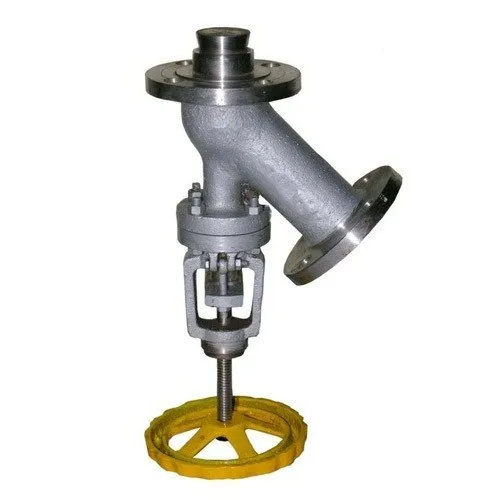
our category
FLUSH BOTTOM VALVE
Flush Bottom Valve: An Overview
A flush bottom valve is a specialized valve used to control the discharge of materials from the bottom of a tank or vessel. It is commonly used in industries such as chemical processing, pharmaceuticals, food and beverage, and wastewater treatment. The primary function of a flush bottom valve is to allow for the clean and efficient discharge of accumulated solids, liquids, or slurry, often under pressure or gravity flow.
Enquire Now
Key Features of Flush Bottom Valves:
- Bottom Discharge Design: As the name suggests, flush bottom valves are installed at the bottom of a tank or vessel to facilitate the easy removal of accumulated materials or liquids.
- Flush Mechanism: The valve’s design typically includes a mechanism that allows the fluid or material to flow freely without obstruction when the valve is open. In many cases, the valve includes a flush port or drain feature that helps clear debris and prevents clogging.
- Sealing Mechanism: A tight, reliable seal is crucial to prevent leakage and maintain system pressure. Flush bottom valves often feature a robust sealing system, usually made from durable materials like PTFE or elastomers, that ensures no material escapes when the valve is closed.
- Manual or Automated Operation: Flush bottom valves can be operated manually or with an automated actuator, allowing for flexibility in operation, depending on the specific application.
How Flush Bottom Valves Work:
Flush bottom valves operate by opening and closing to control the discharge of liquids or solids from the bottom of a tank. When the valve is open, the material within the tank flows out through the valve’s opening. The valve is designed to fully open, providing a clear path for the discharge of fluids, while preventing sediment or solid buildup in the valve itself. The flush action is often achieved using pressure, gravity, or an additional cleaning mechanism built into the valve.
Common Applications:
- Chemical Processing: In chemical plants, flush bottom valves are used to drain tanks that store viscous liquids, chemicals, or slurries. The flush action ensures that the tank or vessel can be emptied efficiently without the risk of clogging.
- Wastewater Treatment: Flush bottom valves are commonly used in wastewater treatment facilities to remove settled solids or sludge from settling tanks or clarifiers.
- Food and Beverage Industry: These valves are used in food processing plants to facilitate the drainage of liquids or slurries from tanks that store ingredients, juices, or other food materials.
- Pharmaceuticals: In pharmaceutical manufacturing, flush bottom valves are used to ensure that tanks used in the production of drugs or chemicals are emptied thoroughly, reducing the risk of contamination.
- Oil and Gas: In the oil and gas industry, these valves are used in tanks or vessels to remove accumulated materials or liquids that need to be processed or disposed of.
Types of Flush Bottom Valves:
- Manual Flush Bottom Valve: Operated by a handwheel or lever, these valves are typically used in smaller systems where automatic control is not required.
- Pneumatic Flush Bottom Valve: Actuated by compressed air, these valves are commonly used in automated systems, where precise and remote operation is required.
- Electric Flush Bottom Valve: Controlled by an electric actuator, these valves are used in systems where electronic control is needed for integration with a larger automation system.
- Hydraulic Flush Bottom Valve: These are less common but used in applications where hydraulic fluid pressure is used to actuate the valve.
Advantages:
- Efficient Discharge: Flush bottom valves are designed to allow the efficient removal of materials from tanks or vessels, reducing the time and effort required for draining.
- Prevents Clogging: The design of the valve minimizes the chances of clogging, as the flow path is typically wide and unobstructed.
- Versatility: Flush bottom valves can be used for a variety of liquids, slurries, and materials, making them versatile in different industries.
- Easy Cleaning: The flush mechanism can help ensure that no residue is left in the valve or piping system, reducing the risk of contamination or buildup.
- Reliable Sealing: These valves provide a secure seal when closed, ensuring that no materials leak out during storage or transport.
Disadvantages:
- Maintenance: While flush bottom valves are designed to be reliable, they may require maintenance over time, particularly in systems handling thick, abrasive, or sticky materials that could clog the valve.
- Space Requirements: The installation of flush bottom valves requires space at the bottom of tanks or vessels, which could be a limiting factor in certain setups.
- Not Ideal for High-Pressure Applications: While flush bottom valves are robust, they may not always be suitable for high-pressure applications, depending on the valve material and design.
Conclusion:
Flush bottom valves play a crucial role in various industries by ensuring the efficient discharge of materials from tanks or vessels. Their ability to prevent clogging, minimize maintenance, and allow for thorough cleaning makes them indispensable in applications involving viscous liquids, slurries, or settled solids. Whether in chemical processing, food production, or wastewater treatment, flush bottom valves offer a reliable and effective solution for maintaining smooth and efficient operations.
